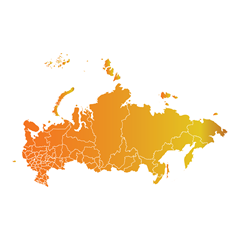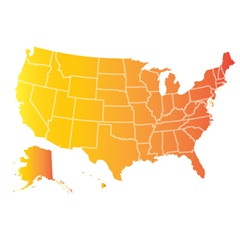The Nickel Market
Critical Minerals and The Energy Transition
An introduction to nickel
Nickel demand and end-uses
Nickel forms an essential component in the cathodes of Li-ion batteries, delivering high energy density and greater storage capacity at a lower cost, thereby delivering a longer range for battery electric vehicles (BEVs) and making them more competitive with internal combustion engine (ICE) vehicles.
Nickel has long been widely used in batteries, most commonly in nickel cadmium (NiCd) and in the longer-lasting nickel metal hydride (NiMH) rechargeable batteries, which came to the fore in the 1980s. Nickel usage in batteries is set to increase as it forms an essential component in the cathodes of lithium-ion (Li-ion) batteries utilised in BEVs.
Nickel has outstanding physical and chemical properties. It has a melting point of 1,453°C, relatively low thermal and electrical conductivities, high resistance to corrosion and oxidation, excellent strength and toughness at elevated temperatures, and is capable of being magnetised. It is attractive and durable as a pure metal, and alloys readily with many other metals.
These qualities make it essential in hundreds of thousands of products. Its main use is in alloying, particularly with chromium and other metals to produce stainless and heat-resisting steels. The six main uses are stainless steel, batteries, Cu-Ni alloys, nickel alloys, plating and nickel compounds.
Usage of nickel has increased over time and is correlated with economic development. Nickel is contained in nearly two-thirds of stainless steel produced. Strong world economic growth until 2007 supported the rising production of primary nickel metal. Over the past 10 years, global nickel output has increased by more than 65%, while that of China has surged by a factor of 13.


Nickel supply and resources
Nickel is a lustrous, silvery-white metal discovered in 1751 and the fifth most common element found on Earth. It occurs in nature principally as oxides, sulphides and silicates. Nickel ores are found in two types of orebody – sulphidic and lateritic. However, polymetallic manganese-rich nodules containing nickel found on the seabed are potentially a resource many times larger than those located on land, with a grade varying from 1.25-1.5% Ni.
Ores of nickel are mined in approximately 20 countries on all continents and are smelted or refined in around 25 countries. Global mined nickel production is derived from ~30% sulphide ores, with the remainder coming from a mix of limonite and saprolite ores.
Globally, the bulk of historical production has been derived from sulphide ores as these are easier to process through conventional mining, smelting and refining, compared to laterite ores. Sulphide ores are typically derived from volcanic or hydrothermal processes and usually include copper and/or cobalt, and sometimes other precious metals such as gold, platinum or palladium (generally grouped as PGMs).
Laterite ores mined from surface targeting limonite (oxide ore) and saprolite minerals (silicate ore) are mined along the Asia-Pacific Rim. Saprolite-type ore, characterised by high magnesia and silica content, is treated by a pyrometallurgy process, while limonite-type ore is subjected to a hydrometallurgical process. Laterites contain 70% of global nickel resources but produce only around 40% of world production.
Primary nickel is produced and used as ferronickel, and in nickel oxides and other chemicals, and as almost pure nickel metal. Globally, over 2 mt of new or primary nickel is produced and used annually. Nickel is also readily recycled in many of its applications, and large tonnages of secondary or ‘scrap’ nickel are used to supplement newly mined metal.
The output of primary nickel production is generally divided into two main product categories: class 1 and class 2. Nickel class 1 is a group of nickel products comprising electrolytic nickel, powders and briquettes, as well as carbonyl nickel. Approximately 40% of primary nickel production was class 1 in 2019.
Nickel class 2 comprises nickel pig iron (NPI) and ferronickel. These nickel products commonly have a lower nickel content and are used in stainless steel production, where producers take advantage of the iron content. China began producing NPI in 2005 in different forms and grades, and this has replaced traditional products such as nickel metal and stainless-steel scrap in the manufacture of stainless steel in China and Indonesia.
Nickel market balance
| tonnes | 2015 | 2016 | 2017 | 2018 | 2019 | 2020 | 2021f | ||
| Primary nickel supply | |||||||||
| Regional | |||||||||
| Indonesia | |||||||||
| Philippines | |||||||||
| Russia | |||||||||
| New Caledonia | |||||||||
| Canada | |||||||||
| Australia | |||||||||
| Rest of World | |||||||||
| Total nickel supply | 2,140,275 | 2,130530 | 2,270,685 | 2,270,960 | 2,430,760 | 2,440,390 | 2,829,855 | ||
| Refined nickel supply | |||||||||
| Indonesia NPI | |||||||||
| China NPI | |||||||||
| Ferronickel | |||||||||
| Class I (briquettes, cathodes, powder) | |||||||||
| Other (primary NiSO4, utility nickel etc.) | |||||||||
| Total refined nickel supply | 2,315,180 | 2,443480 | 2,705,755 | ||||||
| Nickel demand and recycling |
|||||||||
| Lithium-ion battery nickel demand | |||||||||
| Battery electric vehicles (BEV) | |||||||||
| Plug-in hybrid electric vehicles (PHEV) | |||||||||
| Full hybrid electric vehicles (FHEV) | |||||||||
| Mild hybrid electric vehicles (MHEV) | |||||||||
| Full cell electric vehicles (FCEV) | |||||||||
| Heavy-duty electric vehicles (HDEV) | |||||||||
| E-bikes | |||||||||
| Other battery (incl. non-lithium) | |||||||||
| Total lithium-ion battery nickel demand | 52,575 | 58,930 | 62,630 | 80,095 | 163,195 | 188,765 | 249,075 | ||
| Other nickel demand | |||||||||
| Stainless steel | |||||||||
| Alloy steels | |||||||||
| Non-ferrous alloys | |||||||||
| Other nickel demand* | |||||||||
| Total other nickel demand | 2,532,000 | 2,778,355 | 2,957,270 | 3,013,095 | 3,121,905 | 2,995,660 | 3,571,715 | ||
| Gross nickel demand | 2,584,575 | 2,837,285 | 3,019,895 | 3,093,190 | 3,285,095 | 3,184,430 | 3,820,790 | ||
| Nickel recycling | 832,010 | 872,900 | 932,300 | 948,380 | 977,070 | 848,405 | 980,405 | ||
| Net nickel demand | 1,752,565 | 1,964,390 | 2,087,595 | 2,144,805 | 2,308,025 | 2,336,025 | 2,840,385 | ||
| Nickel market balance | |||||||||
| Nickel market balance (with mined supply) | 387,710 | 166,145 | 183,090 | 126,155 | 122,730 | 104,370 | -10,530 | ||
| Nickel market balance (with refined supply) | 7,155 | 107,460 | -134,635 | ||||||
| Nickel price history | |||||||||
| Nickel price (LME, $/tonne) | 9,597 | 10,414 | 13,110 | 13,917 | 13,804 | 17,450 | |||
| Nickel price (LME, $/lb) | 4.35 | 4.72 | 5.95 | 6.31 | 6.26 | 7.92 | |||
|
Nickel sulphate price (Shanghai incl. VAT, $/tonne) |
3,523 | 3,740 | 4,166 | 4,060 | 4,126 | 5,235 | |||
| Mixed hydroxide product price (MHP, 80% LME, $/tonne) |
7,677 | 8,331 | 10,488 | 11,134 | 11,043 | 13,960 | |||
Source: SFA (Oxford). Updated July 2021. Note: *Other nickel demand includes plating and casting.
Current nickel laterite mine producers
Nickel pig iron producers
Ferronickel producers

Mixed hydroxide precipitate (MHP) producers
Mixed sulphide precipitate (MSP) producers
Nickel matte producers
Refined nickel producers
Battery-grade nickel sulphate producers
The Battery Metals market
SFA (Oxford) also provides regular market intelligence on the battery metal markets. Discover some of the critical materials used in batteries.

SFA's nickel market reports
SFA (Oxford) provides regular bespoke lithium-ion battery market intelligence reports on the nickel market as well as in-depth studies on nickel recycling, nickel trade flows and nickel pricing for nickel sulphate and MHP.
Meet the Battery Metals team
Trusted advice from a dedicated team of experts.

Henk de Hoop
Chief Executive Officer

Beresford Clarke
Managing Director: Technical & Research

Jamie Underwood
Principal Consultant

Thomas Chandler
Principal Lithium Supply Analyst

Lakshya Gupta
Senior Market Analyst: Battery Materials and Technologies

Rj Coetzee
Senior Market Analyst: Battery Materials and Technologies

Ismet Soyocak
ESG & Critical Minerals Lead

Thomas Shann Mills
Senior Machine Learning Engineer

Franklin Avery
Commodity Analyst

David Mobbs
Head of Marketing

How can we help you?
SFA (Oxford) provides bespoke, independent intelligence on the strategic metal markets, specifically tailored to your needs. To find out more about what we can offer you, please contact us.































































